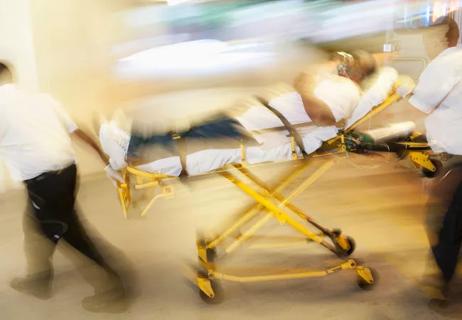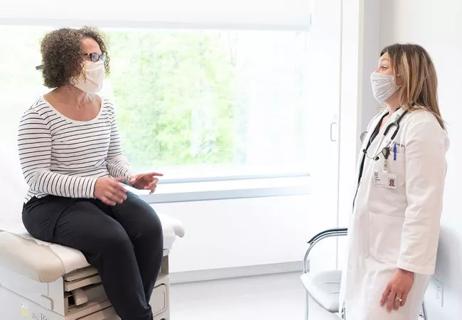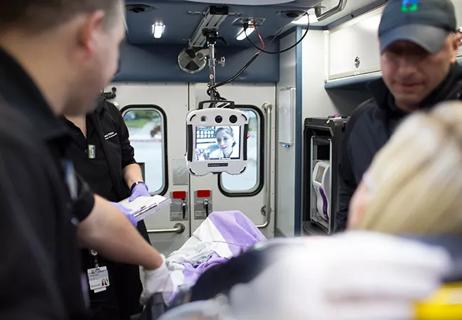Advertisement
Dr. Alex Rae-Grant plans to stay focused on community neurologists’ needs

The American Academy of Neurology (AAN) has appointed Alex Rae-Grant, MD, FRCP(C), FAAN, to be the next chair of the Guidelines Subcommittee of the AAN Quality Committee.
Advertisement
Cleveland Clinic is a non-profit academic medical center. Advertising on our site helps support our mission. We do not endorse non-Cleveland Clinic products or services. Policy
“Guidelines are the most highly read articles in the AAN’s journal, Neurology, and speak directly to our role as neurologists in helping us appropriately treat the patients we serve,” says Dr. Rae-Grant, Director of Education for Cleveland Clinic’s Mellen Center for Multiple Sclerosis Treatment and Research. “Most AAN members are general neurologists, and many work in community settings and don’t have the luxury of going next door to consult with a subspecialist. For these clinicians, the AAN guidelines are a godsend, offering evidence-based expert opinions and recommendations on how to diagnose and manage neurologic conditions. I am honored to be given this responsibility, and I am fortunate to be able to continue working with my excellent colleagues on the subcommittee.”
Dr. Rae-Grant (shown above) has served on the AAN’s Guidelines Subcommittee — officially called the Guideline Development, Dissemination and Implementation Subcommittee — for the past nine years and helped develop a number of guidelines during that time.
His two-year term directing the subcommittee takes effect following the 2019 AAN Annual Meeting, held May 4-10. The term can be renewed up to two times.
A 30-member panel representing all subspecialties in adult and pediatric neurology, the Guidelines Subcommittee is one of the AAN’s hardest-working entities. Approximately 60 active AAN guidelines are currently available for use, addressing topics ranging from child neurology to geriatric neurology, from epilepsy to brain injury, and from headache to stroke.
Advertisement
Guidelines on an additional 30 topics are in development, Dr. Rae-Grant notes. Topics for development and updating are prioritized every six months, he says, and new topics are suggested by subcommittee members. AAN members can also make suggestions.
These functions — identifying which guidelines require updating and new areas where guidelines need to be developed — are at the heart of the subcommittee’s work. Dr. Rae-Grant sees his role as chair as helping the subcommittee be more efficient and effective in those efforts. In general, he hopes to make AAN guidelines shorter and easier to read, with a redesign aimed at providing a more visual presentation of recommendations.
He also expects to assist with a goal established by the AAN’s parent Quality Committee. In addition to the guidelines panel, that committee comprises a Quality Measures Subcommittee, which provides measures clinicians can use to monitor the care they provide, and a Registry Subcommittee, which manages a database of patients being tracked by clinicians. “We’re trying to integrate our guidelines with the quality measures and registry development processes,” he explains, “with the goal of helping neurologists better manage their patients.”
Developing or updating a guideline is a complicated process that takes two-plus years — which Dr. Rae-Grant would like to reduce to two years.
It starts with putting together a panel of experts in the field to identify questions to ask about the topic. A systematic review is performed, with strength of evidence classified as high, moderate, low or very low, depending on the data available and the panel’s assessment of factors that may raise or lower confidence in it.
The panel then meets to discuss the recommendations that can be made from the systematic review process and based on principles of care. These are ultimately assigned a level-of-strength designation, from Level A (strongest) to B (moderate) to C (weak). Next the panel votes on each recommendation and finalizes the language for the recommendation and its supporting rationale. The recommendations are then sent out to the public and the journal (Neurology) for comment before being finalized and published.
The subcommittee also is charged with developing supporting materials, such as slide sets and guideline summaries for clinicians and patients, to facilitate dissemination.
Dr. Rae-Grant sees guideline development as crucial to the mission of the AAN, noting that the subcommittee has adopted guideline development recommendations from the National Academy of Medicine and others to perform the highest-quality work possible.
Advertisement
One essential element of this process is engaging people with the condition being focused on — along with their caretakers and representatives of patient groups and advocacy organizations — to serve on guideline panels and contribute to developing and disseminating recommendations.
“People living with a disease will come up with recommendations that we haven’t thought of as clinicians,” he says. “They help us think in a different way, and their presence improves the conversation in the room. They are integral to the process, and they keep us focused on promoting patient-centered care delivery.”
Advertisement
Advertisement

Analysis characterizes geography’s sizable role in urban/rural care divides

New analysis details the disparities and points to opportunities for improvement

In survey, both female and male respondents reporting ongoing concerns

Group advocates for stroke systems of care supported by telestroke and proper reimbursement

Dr. Gregory Nemunaitis looks to build on his history of integrating education, research and patient care

Mission centers on screening, prevention for at-risk women in their 30s to 60s

One-year results from national database confirm enduring benefits

Q&A with Dr. Andrew Russman, Medical Director of our Comprehensive Stroke Center